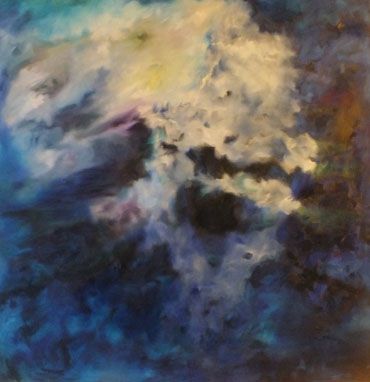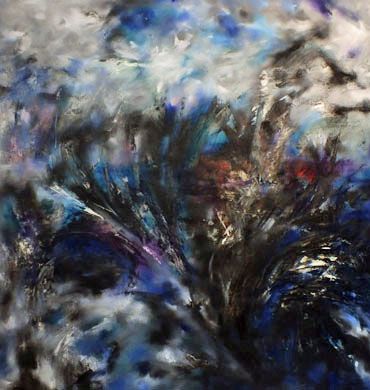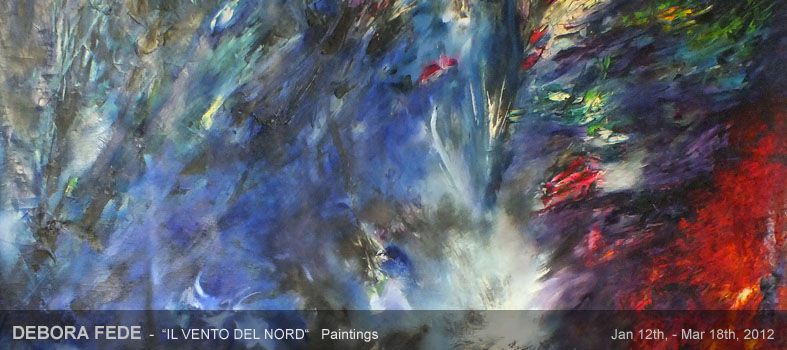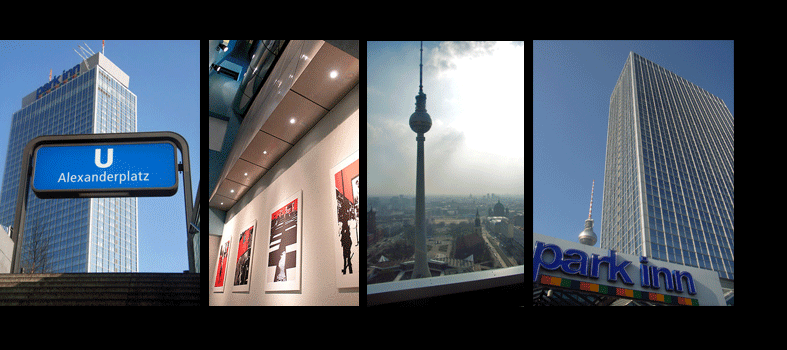
Debora Fede "L'Attesa" 150x150cm, Oil on canvas

Debora Fede "Fuoco azzurro" 145x145cm, Oil on canvas

Debora Fede "To the Lighthouse" 150x150cm, Oil on canvas

Debora Fede "Ti sussurro parole" 145x145cm, Oil on canvas
DEBORA FEDE "Il Vento Del Nord" - Painting
January 12th - March 18th, 2012
Debora Fede, born in Roma, Italy (1965), received her art degree from the "Liceo Artistic" in Rome and finished painting studies at the Academy of Fine Arts Rome. Her studies also included restoration work and architectural design.
Since then she has participated in numerous individual and collective expositions in: Italy, Germany, Spain, Turkey, USA and many more. Debora has also shared her artistic work teaching as an art lecturer for the "Liceo Artistic" in Rome and Istanbul for 18 years.
Her work has been reviewed by such relevant critics, journalist and artists as: Achille Pace, G.P. Berto, Iolena Baldini, Sandro Trotti, José Romera Diaz, Begonia Rentero, etc.
She understands that the aesthetic experience is above all a mean of getting to know the world.
Her contemporary pictorial investigation involves a deep analysis of the feelings and sensations that occur from the actions of humans.
Debora creates her paintings using two basic elements: color and movement. The paintings she depicts partake in a parallel analysis between polychrome and color.
To her, color represents the life force, and black and white brings realism to the work.
Movement for Debora symbolizes the search for sensations, the transmission of feelings and the desire to communicate to others her own experiences as well as discovering oneself through the process of creating.
"Traditionally, art critique divided western visual culture with an imaginary axis that divides Europe in two parts: One Dionysian North, On one side the Dionysian, vital and Aristotelian North. On the other side the Mediterranean, Apollinean, Classic and Platonic South.
Giulio Carlo Argan in his canonical study on Modern Art was indicating a sort of short circuit between both areas during the 20th century, across two fundamental names: the Dutch painter Piet Mondrian as a painter of ether, platonic and mystical, that is to say Italian of vocation and in the opposite side, Giorgio Morandi self-absorbed in the poetical and fascinating visual appearance of the object, (so near to the Flemish aesthetic) that again and again evokes in the dense atmosphere of his still-lifes.
Débora Fede comes from the archetypal South, Roman with Sicilian origins has in her all the southern myths. Excellent drawer who lives through the art almost as a priesthood. Nevertheless there is a sort of subjective attraction in her and in his work, which inexorably sends us to the hazes of the north. She painted rain, seas, rivers, and assumed the irresistible attraction for nature, with a strength that is only similar to the capability for understanding it, and in this sense, her poetical vision is not so different from the fascinating German romanticism.
As Italian, she can't become detached from searching permanently the formal excelence, the intuition for perfection, always in unstable balance, the investigation on the ideal temperature of the color, and the exact location of the light.
Nevertheless his need of infinity, of redemption across the painting, of discovering an intimate and deep form of communication beyond the ordinary ways that drag his life and his work towards the territories of the North.
In Berlin she discovered the need of perfection for his work, of using more aseptic, more conventional support for his deeply emotional painting. The white and the blue that she investigated during his Spanish period evolve towards expressive black, red, green, and certainly the grey of this so poor, so distant and so protective light.
Her last painting, always endowed with the milky grey of the north light, seems to speak about a certain form of alienage, nevertheless her apparent discovery of the exotic does not take root in the confrontation with an exogenous tradition but in the discovery of his own German spirit.
As a permanent traveler in this Berlin painting, she seems to discover what has always been, a singular emotional and vital painter being unrolled in a territory always ambiguous, always for being defined.
Welcome to her own man's land."
José Antonio Romera DÃaz.




